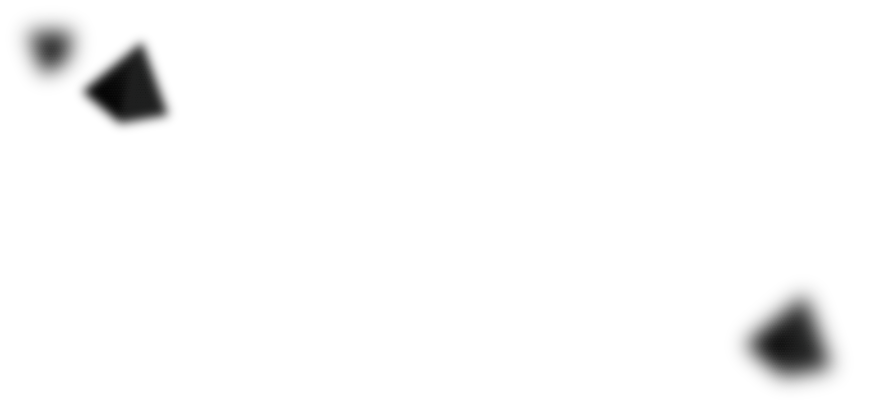Expand Your Knowledge
Courses
Broaden your understanding of foundational and innovative techniques through Courses. Beginners and experts alike explore the breadth of computer graphics and interactive techniques.




“We have a great selection of Courses at SIGGRAPH 2021, covering various aspects of computer graphics and interactive techniques, from color management, virtual reality, and gaze-aware displays to recent advances in geometry, simulation, and neural rendering. I am looking forward to attending these courses!”
Fernando de Goes
SIGGRAPH 2021 Courses Chair
How to Submit
SIGGRAPH 2021 will move forward at this time as a virtual-only event. We look forward to celebrating 48 years of advancements in computer graphics and interactive techniques in our virtual venue. We are excited you are submitting your work for consideration. As we finalize our conference plans, visit the About the Conference page for the latest updates.
Log into the submission portal, select the “Make a New Submission” tab, and select “Courses.” To see the information you need to submit, view the Sample Submission Form.
In particular, please be aware of these fields:
- Title. To help attendees select the right course, please accurately title your course. A presentation that is 90% about Topic One and 10% about Topic Two should not have a title that implies Topic Two is the main subject, regardless of if Topic Two is the more exciting, current, or otherwise appealing subject.
- A presentation format. To propose a Course, please select “Course” as your presentation format. This selection will activate Courses-specific questions in the form. Please see below for more about required information and materials for this presentation format. If you propose a Course in both short (1 hour) and long (3 hours) formats, please clarify the differences between each format.
- One “representative image” suitable for use on the conference website and in promotional materials. Follow the Representative Image Guidelines.
- Information on the intended audience, prerequisites, and level of difficulty. Please choose the level of difficulty appropriately. Your choice will not directly affect the perceived value of the course. You must indicate introductory, intermediate, or advanced.
- Short biographies (100 words) for each of your instructors. At most, a Course should consist of one to four instructors. We recommend one instructor for a Short Course (1 hour) and two instructors for a Long Course (3 hours).
- Sample of course notes. Submit a 5-10 page sample of course notes. The notes should be clear and concise and should demonstrate the expected quality of the learning materials you will make available during and after the conference. As a guide, here are a few examples of past course notes:
When preparing your course notes, you may wish to consult SIGGRAPH’s Publication Instructions.
- A list of potential submission categories and keywords is provided to help ensure your submission is reviewed and juried appropriately. Please select the categories and keywords carefully.
Optional: You also may provide examples of other materials, demonstrations, or exercises that support the Course topics.
For additional submission information or information about uploading files, see Submissions FAQ.
Evaluation
Courses can fulfill many educational roles, such as:
- Introducing a core graphics area, suitable for someone with little background in that area. A course of this kind can cover various topics and can range in level from introductory to advanced. The jury evaluates these proposals based on the belief that the course will guide attendees through the material in a coherent and comprehensible way.
- Introducing a topic related to graphics but not considered “core” graphics. The jury evaluates these proposals based on the expected benefit of the knowledge to a typical SIGGRAPH attendee.
- Consolidating a new and emerging research trend. The jury evaluates these proposals based on their potential to facilitate knowledge transfer for practical applications and guide new researchers in the area. The jury also is hoping to see courses that distill contemporary research into a coherent narrative, as opposed to courses that merely recapitulate a sequence of recent research talks.
Well-attended, strong courses may be re-submitted in subsequent years. Recently taught courses must provide justification for why the course should be repeated. If you are proposing revisiting an older course, you should explain why the material should be revisited and what new advances will be covered. Introductory courses have the potential to be repeated more frequently than advanced ones, as the potential audience is larger.
The success of a Courses proposal is not directly tied to its declared level of difficulty. The conference benefits from a broad spectrum of courses at all levels, including well-designed introductory courses. Please choose the most appropriate difficulty level for a course based on the complexity of the ideas presented and the depth of its prerequisites.
If you have multiple speakers, please take a moment to consider whether you prefer to submit your proposal as a SIGGRAPH Panel or SIGGRAPH Course. It’s your choice, but if you are presenting different perspectives about a topic without a cohesive structure and clear learning objectives, consider a SIGGRAPH Panel submission.
Some reasons courses are rejected:
- Sample course notes fail to communicate key ideas clearly and informatively.
- The submission does not make it sufficiently clear what the theme of the course is or provide details about what specific topics will be presented or how the allotted time will be used.
- Materials are too narrowly focused or advance an agenda. A course should provide a comprehensive overview and not just focus, for instance, on the presenter’s own techniques or methods used in a particular company.
- Previous courses have sufficiently covered the area, or the jury feels the topic is too narrow to attract sufficient attendance at SIGGRAPH.
- Too many high-quality courses were submitted, and the jury could only select a subset.
Concept
How exceptional are the ideas, problems, solutions, aesthetics, etc., presented in this submission? How coherently does the submission convey its overall concept? Is the concept similar to existing ones, or does it stand out? This criterion is particularly applicable to submissions that put together existing technologies into a single Courses proposal (for example, demos, animations, or art pieces). Submissions of this type, where the individual technologies are not necessarily new but their combination is, are evaluated on both the final product and how well-proposed technologies integrate to meet the desired goals. Many submissions in this area are rejected because they do what existing systems do, and they do not demonstrate that the proposed approach will produce a superior course.
Novelty
How new and fresh is this work? Is it a new, groundbreaking approach to an old problem, or is it an existing approach with a slightly new twist? A course that offers a novel, different approach to a topic will be well regarded by the jury.
Interest
Will conference attendees want to attend this course? Will it inspire them? Does it appeal to a broad audience? This is partly a measure of how broad the potential audience is and the overall clarity and novelty of the proposal. If the proposal is a repeat of a past course, evidence of past interest can be useful in evaluation.
Quality, Craft, and Completeness
This is a measure of the Courses proposal’s quality of expression, clarity of thinking, and the completeness and lucidity of the explanation of the nature of the course and its intentions. The submission information, sample course notes, and slides must provide a clear sense that the final course materials will be well-written, well-designed, and well-presented.
Non-Disclosure Agreements
SIGGRAPH reviewers cannot sign non-disclosure agreements for submissions. For information on patents and confidentiality, see the Submissions FAQ.
Upon Acceptance
You will be notified of acceptance or rejection around late April 2021.
After acceptance, the submission portal will allow you to update basic information about your work and upload any final materials for inclusion in the conference program and website. This information needs to be finalized two weeks after acceptance. Final materials can include source code, notes and slides, hardware instructions and requirements, and other material that will help attendees apply their new knowledge.
If your course is accepted, you need to:
- Replace your sample course notes with your final complete notes using the submission portal by 11 June 2021. Course notes are a requirement in order for you to present during SIGGRAPH 2021.
- Submit final course slides using the submission portal by 9 August for inclusion in the ACM Digital Library.
- Prepare a Short Course (1 hour) or Long Course (3 hours) based on your acceptance.
- Coordinate details with your Courses contributors.
Pre-Recorded Video Presentation
To present in the virtual conference, the Courses contributor must: 1) provide a video of their presentation, and 2) plan for one course contributor to be present for the entirety of the virtual session for their course. Final accepted video presentations will be published in the ACM Digital Library. Further details and instructions regarding the video specs will be provided upon acceptance.
Presenter Recognition
To present your work at SIGGRAPH 2021, at least one contributor per submission must register at the appropriate registration level. All other contributors can register at the level of their choice.
You can find a link to the contributor recognition policy here.
ACM Rights Management Form
If your work is accepted for presentation at SIGGRAPH 2021, you must complete the ACM Rights Management Form. The form will be sent to all submitters whose work is accepted.
Timeline
23 February 2021, 22:00 UTC/GMT
Submission deadline
End of April 2021
Acceptance or rejection notices are sent to all submitters.
10 May 2021
Deadline to make any changes to materials (i.e., approved title changes, presenter names, descriptions) for publication on the website.
11 June 2021
Course notes are due.
Please note: Course notes are a requirement in order for you to present during SIGGRAPH 2021. Do not submit a proposal if you cannot commit to providing complete, high-quality course notes by this date.
Summer 2021
SIGGRAPH 2021

